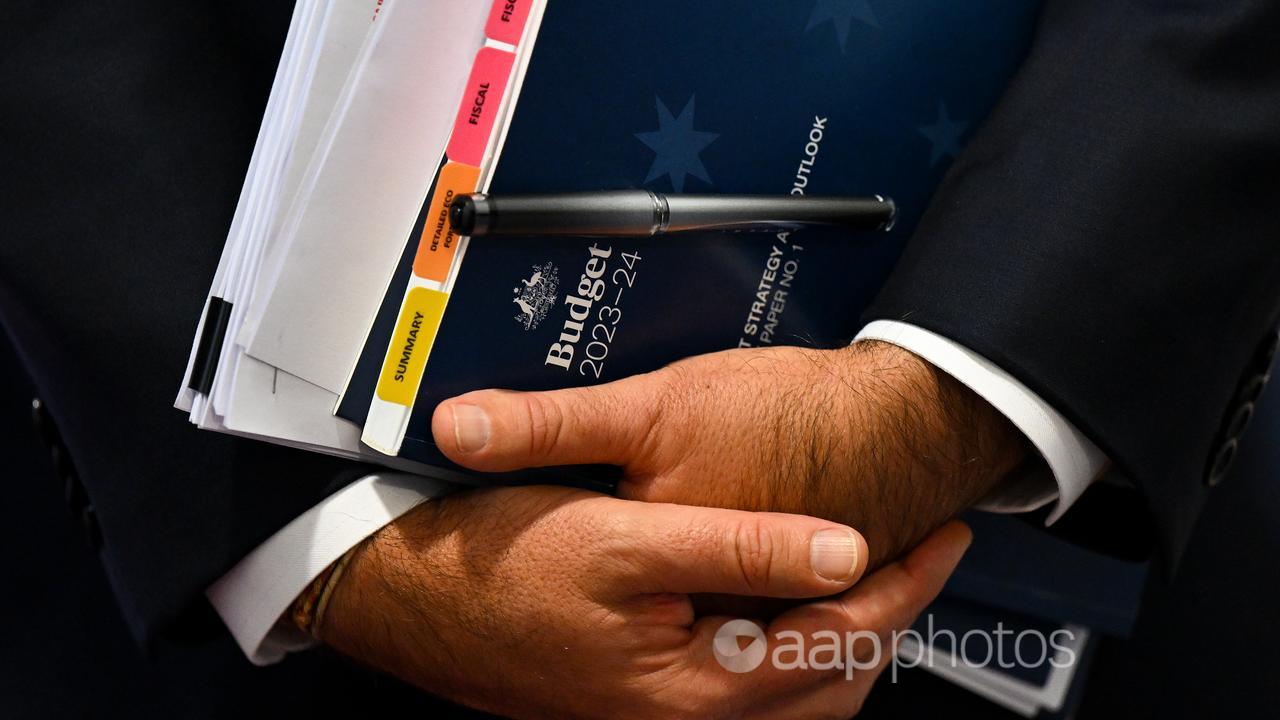The allocation of almost $365m in the federal government’s budget to the voice to parliament referendum has sparked a claim that the Labor Party is using the money to fund the ‘yes’ campaign.
The claim is false. Budget papers reveal the vast majority of the sum is going to the Australian Electoral Commission (AEC) to run the referendum. Smaller sums have been earmarked for an educational campaign and mental health provisions.
The claim was made in a Facebook post (archived) on May 31.
“We have the ALP using $360 million dollars of our tax payer money to fund the YES vote and another $20 million for mental health for indigenous people who suffer from the affects (sic) of the voice referendum,” the post says.
The claim is based on the government’s announcement in the May 9 budget that $364.6m would be spent to help deliver the referendum.

News reports following the release of the budget papers, such as here, here and here, revealed $336.6m of the funding would be provided over two years to the AEC to deliver the referendum, of which $10.6m would go towards information pamphlets detailing both the ‘yes’ and ‘no’ cases.
The government’s own 2023/24 budget documents confirm this.
“The Government will provide $364.6 million over 3 years from 2022–23 to deliver the referendum to recognise Aboriginal and Torres Strait peoples in the Constitution through a Voice to Parliament,” the papers say on Page 85.
The document further breaks down how the funding will be allocated:
- $336.6m for the AEC to deliver the referendum — that includes $10.6m to produce information pamphlets for both the Yes and the No cases for distribution to all Australian households.
- $12m to the National Indigenous Australians Agency and the Museum of Australian Democracy for neutral public civics education and awareness activities.
- $10.5m to the Department of Health and Aged Care to increase mental health support for First Nations people during the referendum period.
- $5.5m to the NIAA for consultation, policy and delivery.
On the $10.5m towards mental health (not $20m as claimed in the Facebook post), the National Indigenous Times reports the allocation has been made following concerns about the impact of potential racism and misinformation during the debate.

There has been some criticism of the AEC for parts of its promotional material relating to the referendum.
Senators Jacinta Nampijinpa Price and Bridget McKenzie and prominent ‘no’ campaigner Warren Mundine are among those to have accused the AEC of taking sides – a claim the AEC rejects.
Former prime minister and ‘no’ campaigner Tony Abbott has also alleged there is an unfair playing field, saying the government’s campaign against voice misinformation will “ultimately be propaganda for the ‘yes’ case” (audio mark 4 minutes 24 seconds).
However, it is false that the Labor government has, or will, use $360m to fund the ‘yes’ vote.
The government set out last year that no public money will be spent on the ‘yes’ and ‘no’ campaigns.
The Verdict
The claim that $360m of taxpayer money has gone into funding the ‘yes’ vote for an Indigenous voice to parliament is false.
The government’s Budget 2023-24 papers reveal the bulk of the money will go to the AEC to facilitate the referendum vote, with other funds going towards Indigenous mental health support and neutral public civics education and awareness activities.
False – The claim is inaccurate.
AAP FactCheck is an accredited member of the International Fact-Checking Network. To keep up with our latest fact checks, follow us on Facebook, Twitter and Instagram.
All information, text and images included on the AAP Websites is for personal use only and may not be re-written, copied, re-sold or re-distributed, framed, linked, shared onto social media or otherwise used whether for compensation of any kind or not, unless you have the prior written permission of AAP. For more information, please refer to our standard terms and conditions.


















